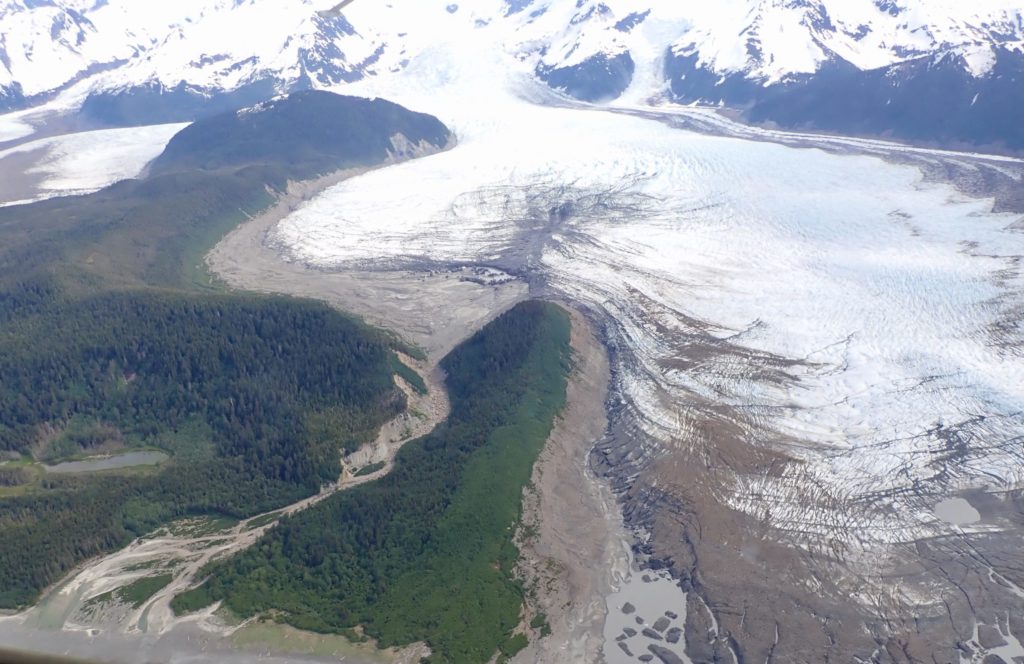
The trees around La Perouse glacier, in Glacier Bay National Forest, recorded microclimate changes as the glacier advanced and retreated. A new study in AGU's Geophysical Research Letters reports on how scientists can use those records to predict how near-glacier ecosystems will respond to future climate change. Credit: B. Gaglioti

A core from a yellow cedar tree near the La Perouse glacier shows compressed growth rings during cold, dry periods, as the glacier advanced. Credit: B. Gaglioti
Camping on ice
Gaglioti and his colleagues installed a network of temperature sensors for hundreds of meters surrounding La Perouse Glacier and collected the data for three years, from July 2018 to July 2021. The microclimate extended at least 600 meters into the forest, the farthest distance they'd placed sensors. Without more distant sensors, "it's hard to constrain where it actually ends," Gaglioti says.
The findings also add an important source of information in reconstructing the movement of past glaciers and their influence on the surrounding biosphere. "If you look at trees that were run over by the ice, you can see the cooling effects as the ice approaches them, before they die," Gaglioti says. The trees left behind offer important climate records as the glacier retreats, as well as insights into the rate of retreat and possible influences on ecological succession once the ice has gone.
There's work yet to be done. There are five other tree species in La Perouse's microclimate and preliminary results suggest each species responds differently to the climate changes. Gaglioti hopes he can use these records to better understand how a whole forest responds to large magnitude cooling and warming. Similar microclimate records elsewhere can be used to examine climate sensitivities of other biological systems, from microbes to mammals.






